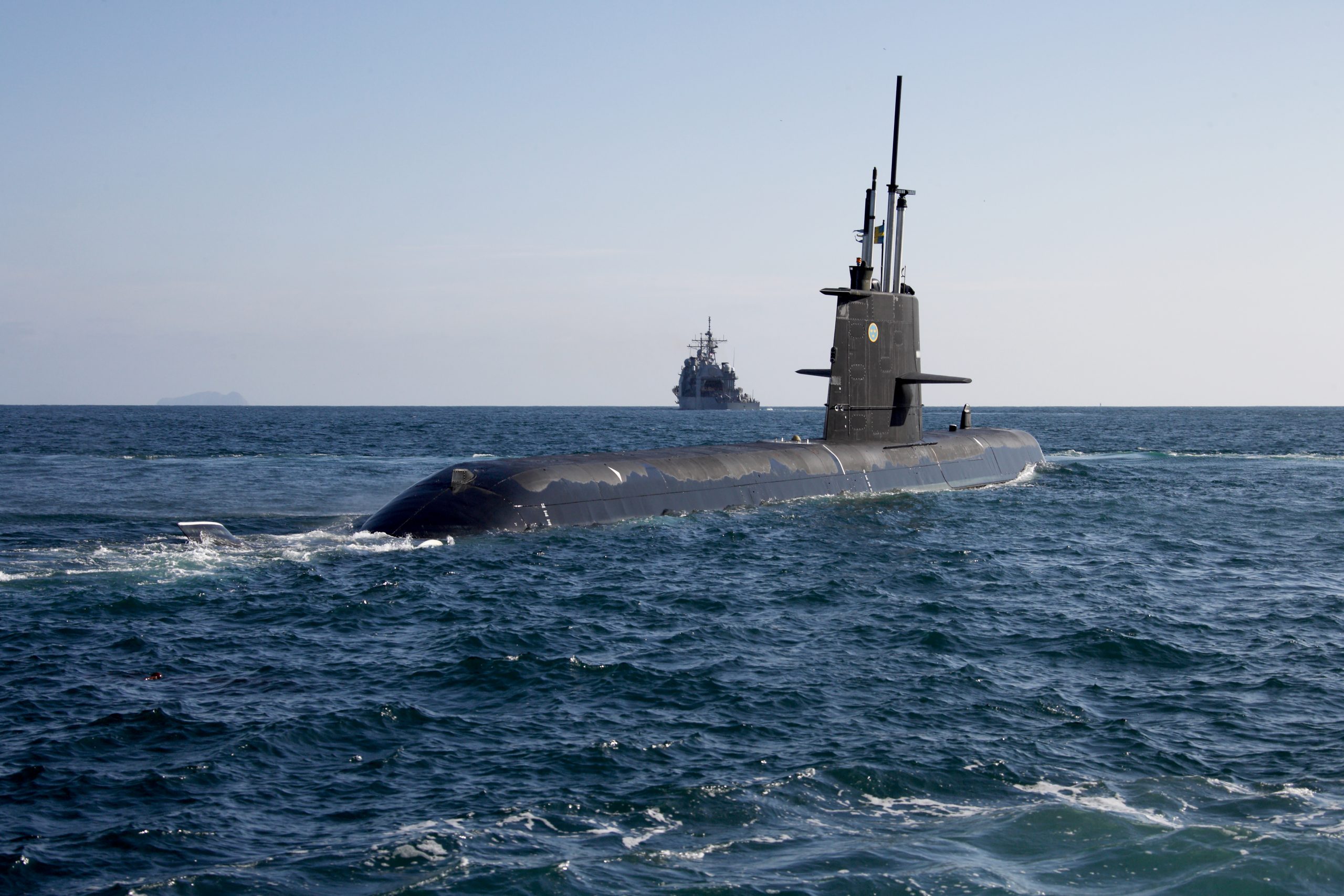
Both the Swedish Royal Navy and the Finnish Navy are anticipating the arrival of a new generational torpedo designed for the challenging waters of the Baltic Sea.
The Swedish Defence Procurement agency FMV and the Swedish Royal Navy (RSwN) have just assisted Saab in trialing its new Saab Lightweight Torpedo (SLWT) from a Gotland-class submarine and from a Visby-class corvette. The tests were conducted during February and March 2020 at sea ranges outside Karlskrona, on Sweden’s east coast in the Baltic Sea.
Both the Swedish Royal Navy and the first foreign customer, the Finnish Navy, have contracted Saab to provide them with a modern, digital homing and wire guided torpedo. The RSwN needs a replacement for its Torpedo 45 currently in service, while the Finnish Navy made a decision to bring back torpedoes as weapons for its four upgraded Hamina-class fast attack craft as well as the new Pohjanmaa-class corvettes of the Squadron 2020 Programme. These ships are due to be constructed between 2022-2025 with first sea trials beginning in 2024. The full Squadron is scheduled to be operational by 2028. The RSwN’s two A26 submarines are scheduled for delivery by 2025.

Magnus Lind, project manager NLT (TS47), Swedish Defence Materiel Administration (Försvarets materielverk/FMV) said that work had begun on the new Torpedo 47 back in 2014. Although the RSwN is a proficient operator of anti-submarine warfare (ASW), Lind said that research and technology studies were still conducted on how the new Torpedo 47 would be integrated onboard a surface vessel, a submarine as well as being dropped from a helicopter.
Anne-Marie Vösu, vice president and head of Business Unit Underwater Systems, Saab, said that these first test conducted during exercise conditions from a corvette and a submarine were a major milestone in the development of this next generation torpedo. It is a littoral weapon, specifically designed for the shallow Baltic Sea and to be used with an Integrated Total Engagement Control (ITEC) system. The torpedo then uses an active/passive homing system to detect, classify, track and engage its target.

Lind revealed that the trails were basically proof of concept tests where the torpedo had been launched successfully both from on top of, and under, the sea. “We got a lot of data from exercise and we are now in the last stages of the development programme. Earlier land based trails have already been conducted to ensure that the customer’s requirements were being met and progress was on schedule. In addition to the actual weapon, other elements of the total system design include the interface with the host vessel, the launch unit and the communications through which the torpedo will be wire-guided to its target.
Lind said that the tests conducted in these final phases of the development would lead into production with the weapons ready for operational deployment on the corvettes by late 2022 and in submarines early the following year. Before then however, there will be more sea trials which will be conducted from naval vessels, operational and maintenance training, and finally acceptance from the customer. Once in service, the RSwN intends to use the Torpedo 47 onboard the modified Gotland class submarines, the new coming Blekinge class submarines (A26) and the Visby-class corvettes.
Lieutenant Commander (LtCdr) Anders Hecker, Commanding Officer of HSwMS Helsingborg (K32, a Visby-class corvette) said that good sensors and torpedo guidance were crucial in the difficult waters of the Baltic Sea. He said that the Torpedo 47 represented a “continuation of a concept , modern but based on what we currently use.” Crucially it will have a wider speed range, better endurance and therefore longer range, he added. The RSwN has conducted over 2,000 shots of Torpedo 45, with operational knowledge gained being fed back into Saab’s Next Generation weapon.
According to Lind, two of the most important challenges in developing the torpedo was the challenging environment in which it will operate, as well as the safety concerns specific to the different surface and sub-surface platforms.
Feasibility studies were conducted during 2015-16 into the use of the Torpedo 45 from a helicopter , but a requirement and integration plan still needs to be formulated.












